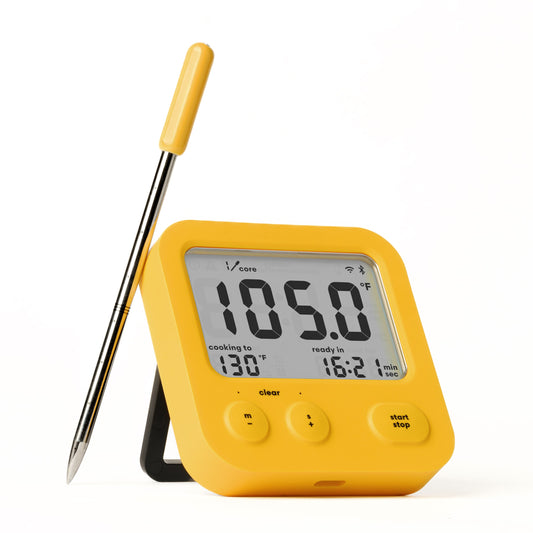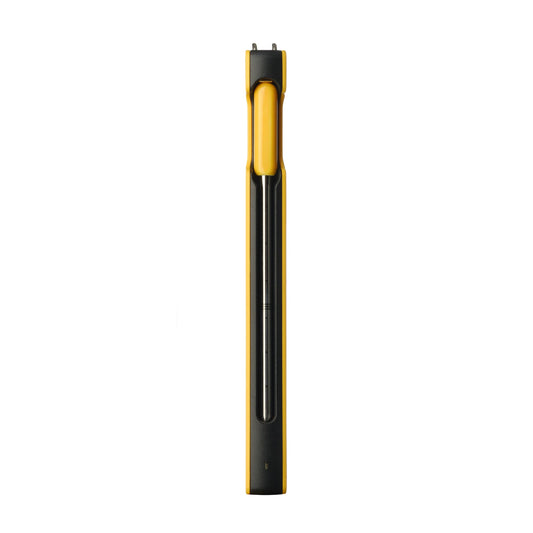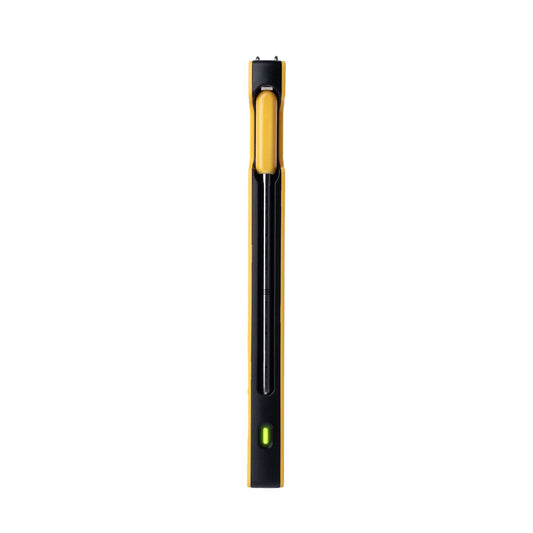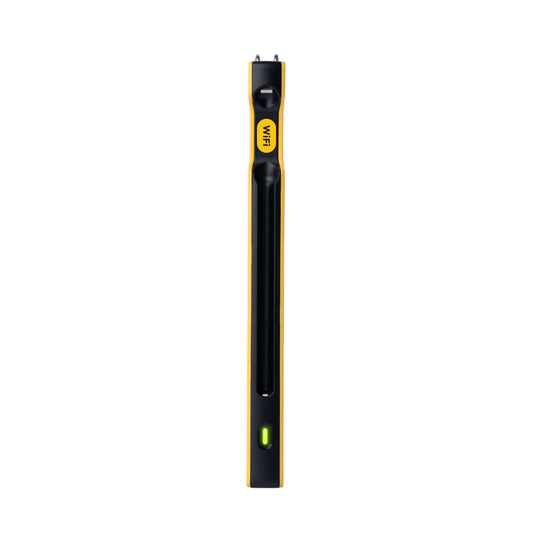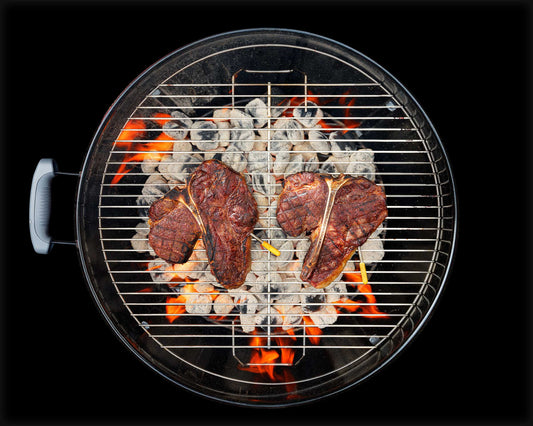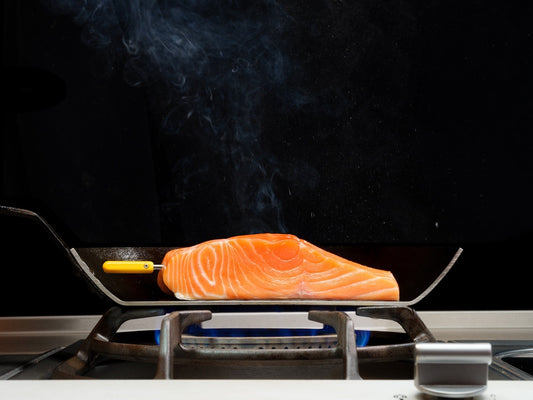Beef Wellington with the Predictive Thermometer
Share
Please watch the whole video (with useful narration) - 9 min on Chris Young's YouTube Channel.
Recipe
Shopping list:
- Center-cut beef tenderloin, ~900g
- Puff pastry sheets, two ~400g sheets
- Cremeni mushrooms, ~600g
- Shallots ~200g
- Lardo, ~32 thin-slices
- Dijon mustard, ~25g
- Whole egg, 1
- Thyme, ~8 to 10 sprigs
- Oregano, ~4 to 5 sprigs
- Rosemary, ~4 sprigs
- Maderia, ~100g
- Salt ~ as needed
- Black pepper ~ as needed
- Beef tallow, as need for frying (optional)
- Canola oil, as needed for frying
- All purpose flour, as needed
- Non-stick parchment paper
- Plastic wrap
Steps
1. PREPARE THE BEEF by trimming and season with 1% of its weight in salt. Wrap the meat and salt tightly in plastic wrap, package for sous vide, cook at 130°F (55°C) for 3 hours, and then refrigerate until cold. Shallow-fry in an oil at 400°F (205°C) for 60 to 90 seconds to develop a medium-brown crust. Blot off excess oil, then chill and keep refrigerated until needed.
2. PREPARE THE DUXELLES by finely chop the shallots and mushrooms. Cook the mushroom and shallots together over medium-low heat. Season with salt and pepper to taste. Add sprigs of thyme and oregano and cook until the mixture looks dry. Deglaze with Maderia and continue cooking until mixture is dry.
3. PREPARE THE CURED-MEAT WRAPPER by laying out the slices of lardo (or prosciutto) on nonstick parchment. Work left to right and then bottom to top, and overlap each slice so they'll hold together as a solid sheet.
4. SPREAD THE DUXELLES LAYER over the cured meat sheet using an offset spatula to make an even layer about 0.25in / 6mm thick. Leave about an inch of the cured meat uncovered at the top of the sheet so that it can close the wrapping.
5. WRAP THE BEEF using a long sheet of plastic wrap.Use two overlapping sheets of plastic wrap for enough width if necessary. Coat the beef tenderloin with a thin layer of mustard, and then place it onto the duxelles about one-third of the way up. Use the plastic wrap to roll things up. As you do, peel back some of the parchment paper so that the other end of the cured meat will overlap onto itself and seal the roll closed. Use the plastic to wrap tighten the roll, and refrigerate while preparing the puff pastry.
6. WRAP IN SHEET OF PUFF PASTRY a few inches wider than the meat roll, and long enough to wrap around the meat roll. Brush the sheet with egg wash, then wrap the pastry tightly around the meat roll. Pinch the ends closed and trim as necessary. Egg wash the surface and cover with the puff pastry lattice (optional). Make a hole for a wireless thermometer (optional) and wiggle the probe to make the hole a bit oversized (it will shrink during freezing! Wrap in plastic wrap and freeze until ready to cook and serve.
7. BAKE THE WELLINGTON's CRUST in a convection oven preheated to 450°F (230°C). Unwrap the Wellington, let the pastry thaw for a few minutes and then brush with egg wash. Add rosemary sprigs to the lattice windows if you want. REINSERT the Predictive Thermometer into the hole and then bake until the crust is dark golden brown and the surface sensor just beneath the crust has reached 190 °F (88°C), which means the crust has cooked through. This takes about 40 minutes. Note, rotate the Wellington as needed for even browning and reduce the oven temperature to 350°F (175°C) if the crust is starting to look too dark too quickly.
8 FINISH HEATING THE BEEF once the crust is fully baked. Crack the oven door and reduce the oven temperature to below 200°F (93°C), and ideally close to 150 °F (65 °C). Let the meat continue to heat through until the core is at least 105 °F (40 °C), which will take another 40 minutes. Use advanced mode on the Predictive Thermometer to see the temperatures from all 8 sensors to get a sense of the different temps inside the Wellington. Don't let the surface of the meat exceed 120°F (49°C) during this step, as it will continue to heat to about 130°F (55°C) while the Beef Wellington rests before slicing.
8. SLICE AND SERVE the Beef Wellington!
